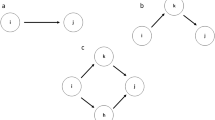Abstract
The generally applied modeling procedure for development of ecological models leads to a description of the dynamics of the state variables. The processes are f(time) but it is presumed that the properties presented by the model parameters are constant, but they are not necessarily valid for another period because we know that an ecosystem can regulate, modify, and change them, if needed as response to changes in the existing conditions, determined by the forcing functions and the interrelations between the state variables. Our present models have rigid structures and a fixed set of parameters meaning that no changes or replacements of the components are possible. We need, however, to introduce parameters (properties) that can change according to variable forcing functions and general conditions. The model type that can account for the change in species composition as well as for the ability of the species, i.e., the biological components of our models, to change their properties, or to adapt to the existing conditions imposed on the species, is denoted as structurally dynamic model, to underline that they are able to capture structural changes. They also may be called the next or fifth generation of ecological models to notify that they are radically different from previous modeling approaches and can do more, namely describe adaptation and shifts in species composition. Structurally dynamic models can be developed by two methods:
-
1.
use of expert knowledge, where the knowledge about which species and which properties are present under which conditions, is used to shift the parameter values (it means the properties of the dominant species,
-
2.
use of a goal function which is able to express the survival of the fittest. It means using a mathematical expression to find which properties (parameters) are best able to give survival of the biological state variables under the prevailing conditions. The state variables (components) try to optimize continuously the ability of the system to move away from thermodynamic equilibrium according to thermodynamics of ecosystems. The state variables can change by adaptation or by change of the species composition. There are always several species waiting in the wing ready to take over, if they are better survivors. The idea is therefore to test if a change of the most crucial parameters would be able to move the system more away from thermodynamic equilibrium, and if that is the case, to use that set of parameters, because it expresses the adaptation and the shifts in species composition that take place.
Both methods have been applied. The second method has been used most widely and here, the work energy of the ecosystem or rather the work energy calculated for the model of the ecosystem is the most applied goal function. How to use this method in practical modeling is presented together with a list of cases and two examples illustrating the advantages of using this method for the development of structurally dynamic models. It is briefly discussed how this promising method can be used to model the consequences of climate changes. The results can be found for unit areas on for instance 10 × 10 km and the spatial distribution thereby illustrated and a geo-process model developed.









Similar content being viewed by others
References
Boltzmann L (1905) The second law of thermodynamics (Populare Schriften. Essay No.3 (Address to Imperial Academy of Science in 1886)). In: Theoretical physics and philosophical problems, selected writings of L. Boltzmann. D. Riedel, Dordrecht (Reprinted in English)
Grant PR (1986) Ecology and evolution of Darwin’s Finches. Reprinted in 1999. Princeton University Press, New Jersey, p 492
Jørgensen SE (1992a) Parameters ecological constraints and exergy. Ecol Model 62:163–170
Jørgensen SE (1992b) Development of models able to account for changes in species composition. Ecol Model 62:195–208
Jørgensen SE (1994a) Review and comparison of goal functions in system ecology. Vie Milieu 44:11–20
Jørgensen SE (1994b) Fundamentals of ecological modelling. In: Developments in environmental modelling 2nd edn. Elsevier, Amsterdam, p 628
Jørgensen SE (1995a) Exergy and ecological buffer capacities as measures of the ecosystem health. Ecosyst Health 1:150–160
Jørgensen SE (1995b) The growth rate of zooplankton at the edge of chaos: ecological models. J Theor Biol 175:13–21
Jørgensen SE (2012) Introduction to systems ecology. CRC, Boca Raton, p 320
Jørgensen SE, Fath Brian D (2004) Modelling the selective adaptation of Darwin’s Finches. Ecol Model 176:409–418
Jørgensen SE, Fath B (2011) Fundamentals of ecological modelling, 4th edn. Elsevier, Amsterdam, p 400
Marchi M, Jørgensen SE, Bacares E, Corsi I, Marchettini N, Bastiononi S (2012) Modelling the carbon cycle of Siena Province (Tuscany, central Italy). Ecol Model 225:40–60
Nielsen SN (1992a) Application of maximum exergy in structural dynamic models, Ph.D. Thesis. National Environmental Research Institute, Denmark, p 51
Nielsen SN (1992b) Strategies for structural-dynamical modelling. Ecol Model 63:91–102
Scheffer M, Carpenter S, Foley JA, Folke C, Walker B (2001) Castrophic changes ecosystems. Nature 413:591–596
Straskraba M (1979) Natural control mechanisms in models of aquatic ecosystems. Ecol Model 6:305–322
Zhang J, Jørgensen SE, Tan CO, Beklioglu M (2003a) A structurally dynamic modelling—Lake Mogan, Turkey as a case study. Ecol Model 164:103–120
Zhang J, Jørgensen SE, Tan CO, Beklioglu M (2003b) Hysteresis in vegetation shift—Lake Mogan Prognoses. Ecol Model 164:227–238
Zhang JZ, Gurkan, Jørgensen SE (2010) Application of eco-energy for assessment of ecosystem health and development of structurally dynamic models. Ecol Model 221:693–702
Author information
Authors and Affiliations
Corresponding author
Rights and permissions
About this article
Cite this article
Jørgensen, S.E. Structurally dynamic models: a new promising model type. Environ Earth Sci 74, 7041–7048 (2015). https://doi.org/10.1007/s12665-015-4735-6
Received:
Accepted:
Published:
Issue Date:
DOI: https://doi.org/10.1007/s12665-015-4735-6




